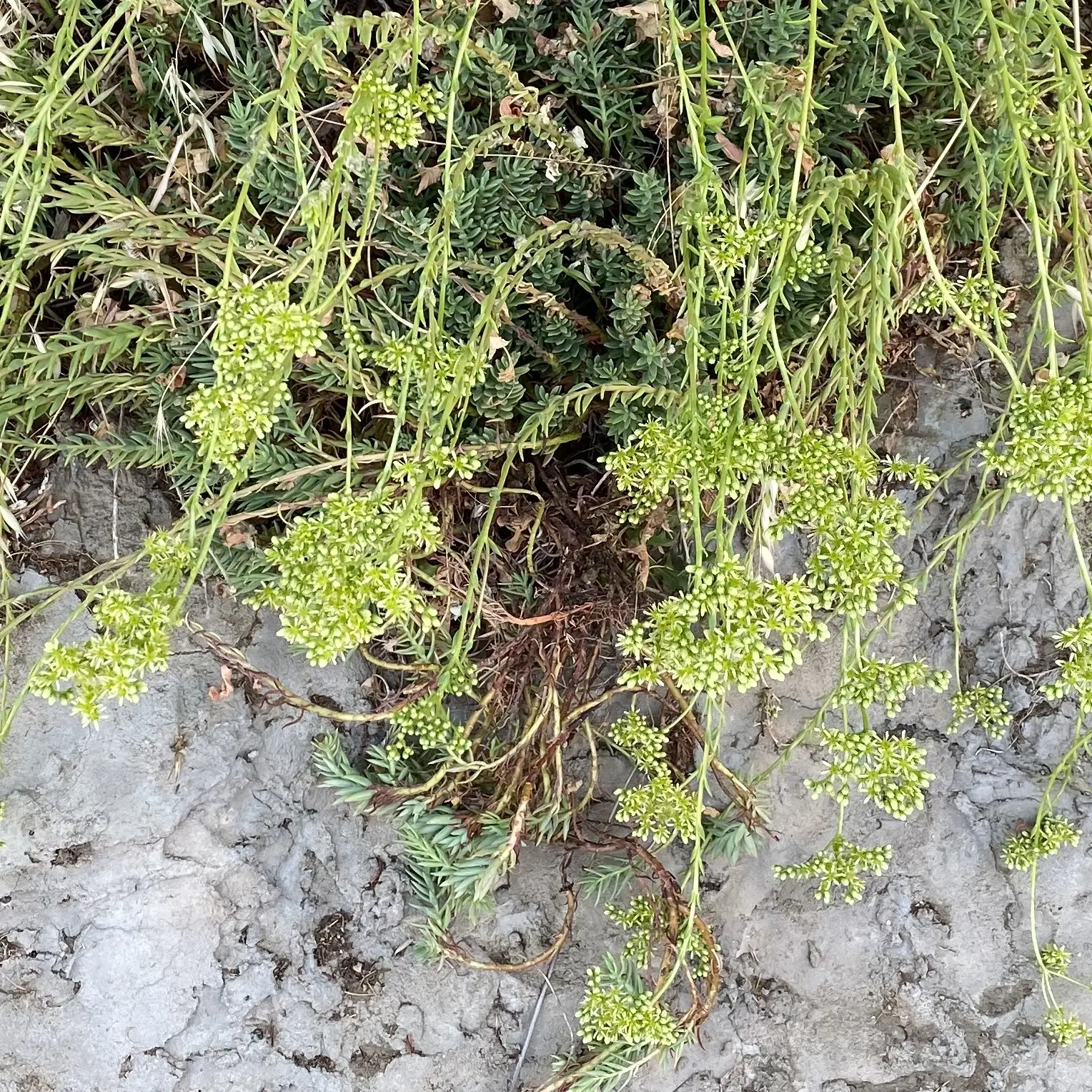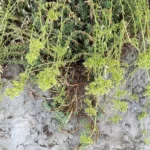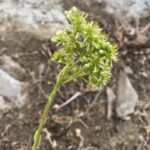Σέδον το σεδόμορφο
Etymology of Sedum sediforme: New Latin "Sedum" (first known use in 1760) derives from the Latin verb"sedo", meaning "to sit, to settle"; Pliny refers to the plant sitting among others on rocks. "Sediforme" come from the Latin "Sedum + forma", meaning "figure like Sedum", a reference to its figure/appearance.
Ten Sedum kinds (species and subspecies) have been identified so far in the Cypriot habitat, of which one appears exclusively in the occupied north.
This succulent is a common Sedum species in Cyprus encountered all over the island (excluding the southern, central and eastern Mesaoria region) up to an altitude of 925 metres. Sedum sediforme makes yellow flowers. This photo was taken in late May at medium-high altitude but it still hadn't entirely bloomed. It is often seen as a domestic plant. It is found on dry, uncultivated ground, rocky areas or igneous or limestone ground. Its flowering time is between April and July.



